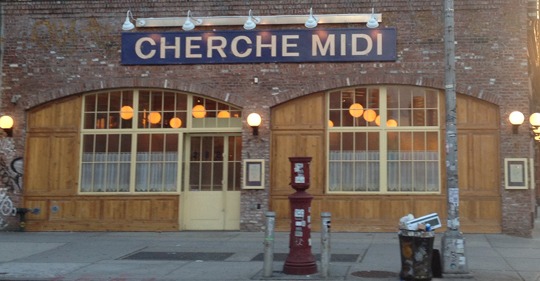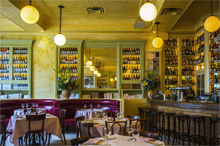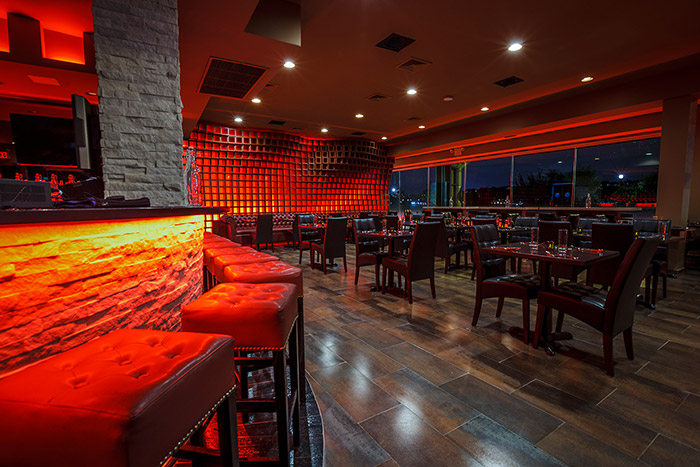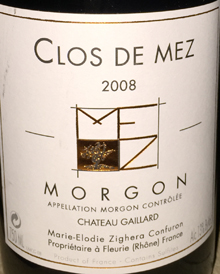Cherche Midi
 Monday, November 24, 2014 at 08:55PM
Monday, November 24, 2014 at 08:55PM 
 Lather. Rinse. Repeat.
Lather. Rinse. Repeat.
You can’t escape that feeling when you walk into yet another Keith McNally restaurant. Whether it’s the Odeon or Cafe Luxembourg (with which he’s no longer associated), Pastis (recently closed), Balthazar or Minetta Tavern (both alive and well), or the brand new Cherche Midi, you’ve seen this before.
 McNally has only occasionally departed from his signature motif, the all-day French brasserie. But even these other places, such as Schiller’s Liquor Bar and Morandi, bear his unmistakable stamp, long since copied by many others, though seldom as well.
McNally has only occasionally departed from his signature motif, the all-day French brasserie. But even these other places, such as Schiller’s Liquor Bar and Morandi, bear his unmistakable stamp, long since copied by many others, though seldom as well.
He has rarely failed, but Pulino’s, his bar and pizzeria, never caught on like the rest of them. McNally panicked when he fired the opening chef, Nate Appleman, who got mediocre reviews. I liked Pulino’s under Appleman; much of the charm evaporated after he left. “Failure” is relative: Pulino’s had a nearly four-year run.
 With Cherche Midi, McNally has returned to the French brasserie template that has worked so well at Balthazar, Minetta Tavern, and so many others. It is, of course, reliably full with beautiful guests who know and love the formula, and the rest of us when we can get in. Whether it will fill a distinct niche, as his more successful establishments have done, will take time to sort out. For now, it is very good, and that’s enough.
With Cherche Midi, McNally has returned to the French brasserie template that has worked so well at Balthazar, Minetta Tavern, and so many others. It is, of course, reliably full with beautiful guests who know and love the formula, and the rest of us when we can get in. Whether it will fill a distinct niche, as his more successful establishments have done, will take time to sort out. For now, it is very good, and that’s enough.
McNally’s establishments are less chef-driven than most restaurants. You go to Balthazar for what McNally has created, not for who’s in the kitchen. Still, good food doesn’t happen by accident. There are co-executive chefs at Cherche Midi, Daniel Parilla (a former sous chef at Minetta) and Shane McBride (who still oversees the kitchens at Balthazar and Schiller’s). Should either man leave, McNally would replenish from his deep bench, and I doubt Cherche Midi would miss a beat.
The food is prepared with French technique, although the menu is mostly in English. Appetizers are $14–27 (all but one under $20), entrées $23–49, side dishes $9, desserts $10–11.












